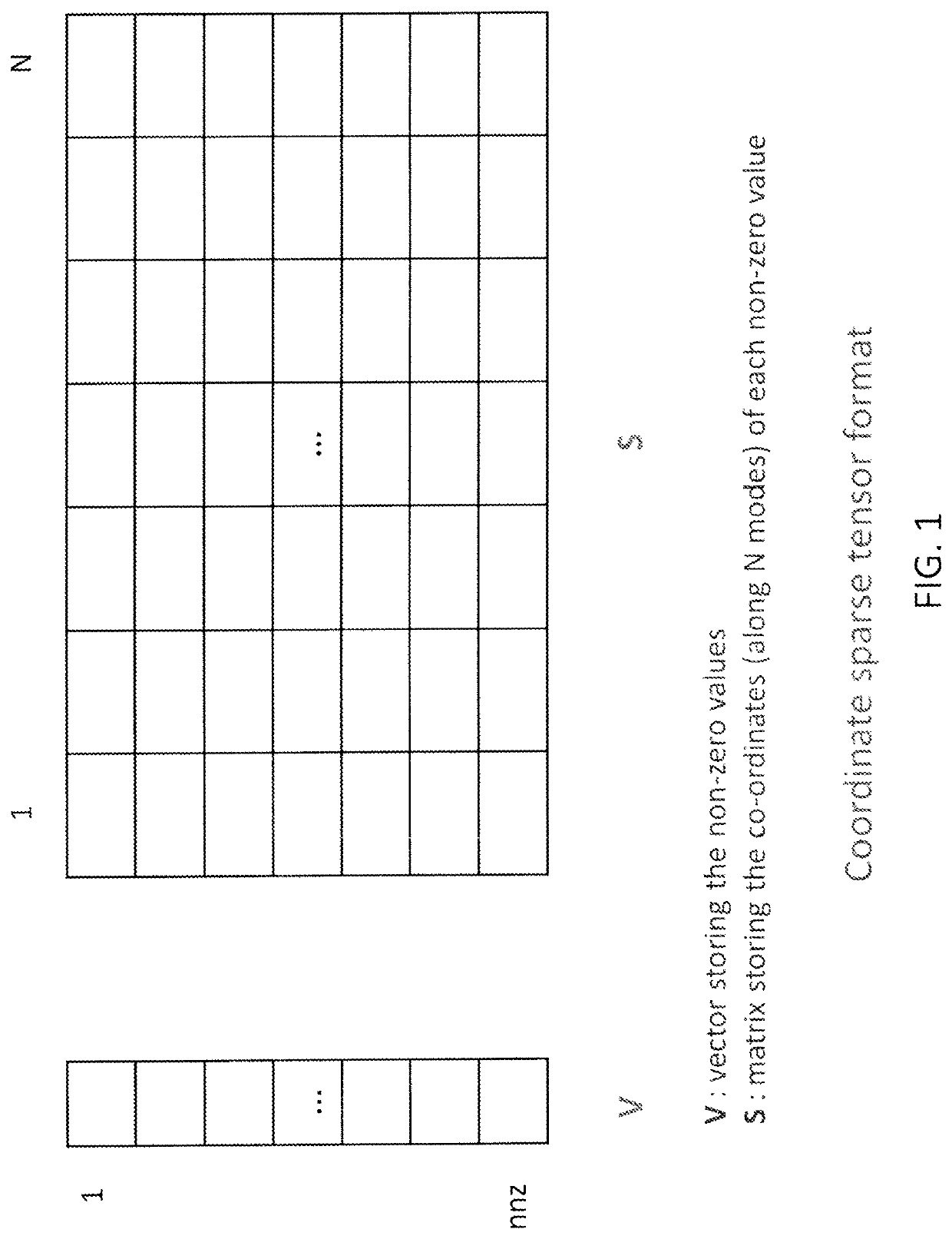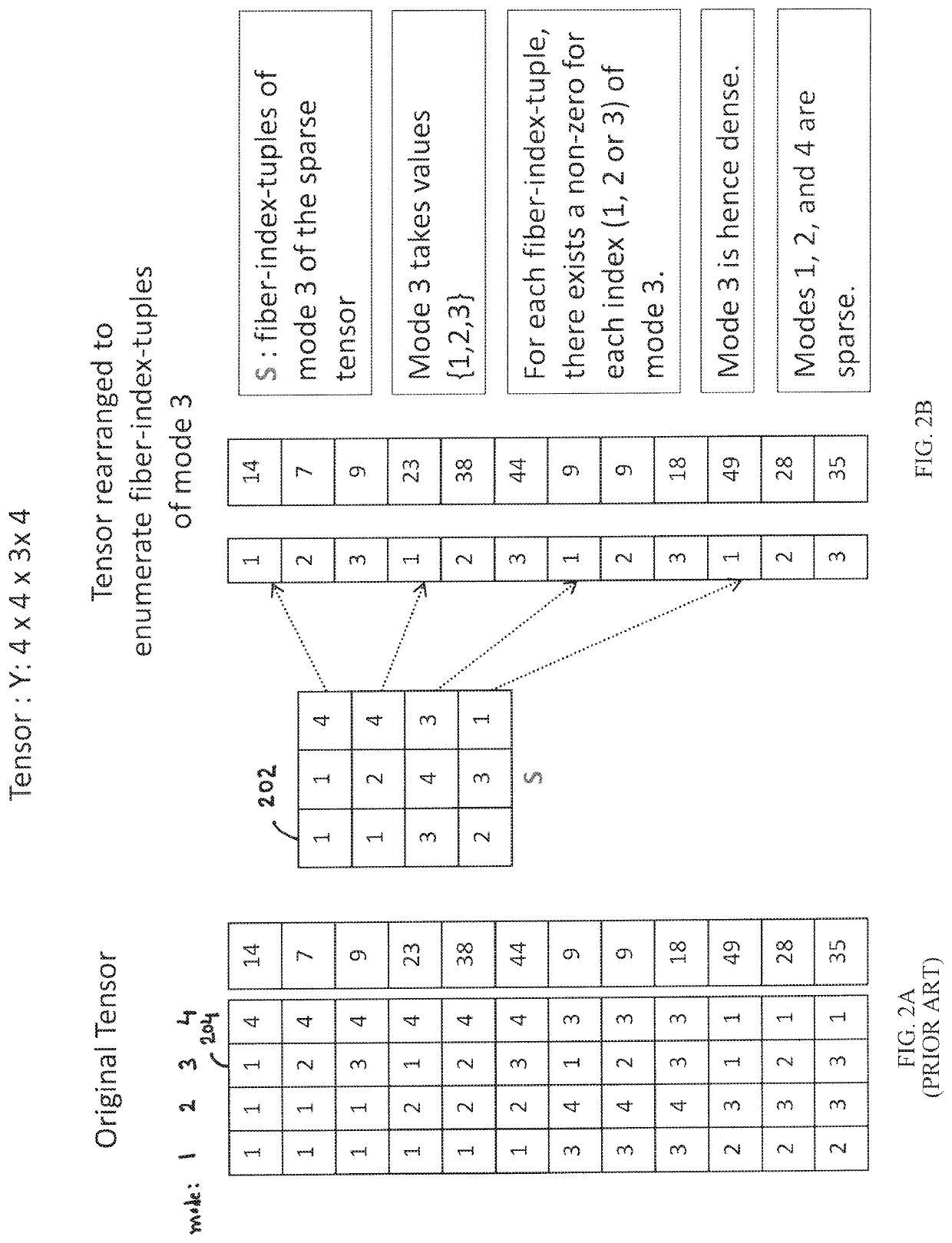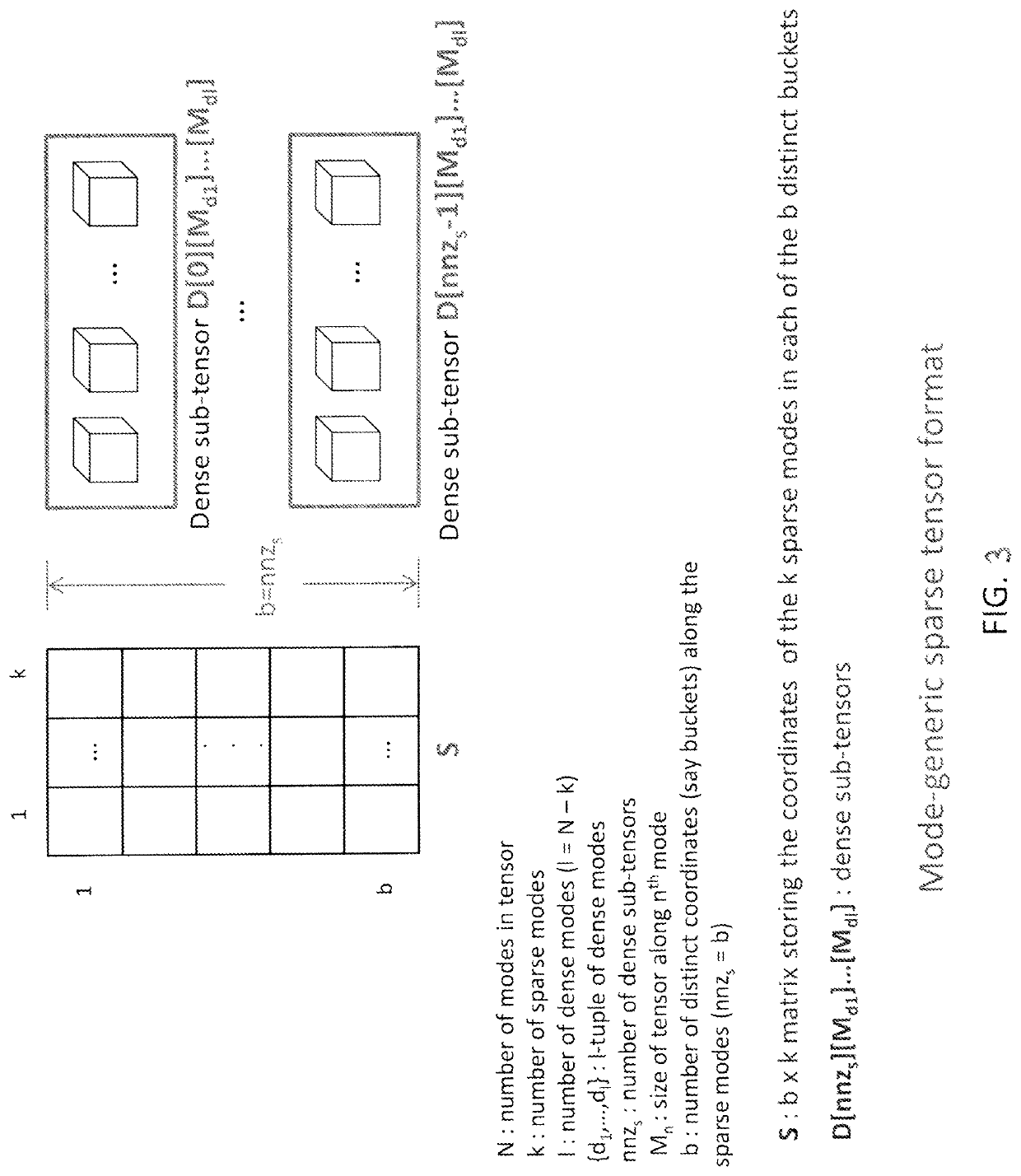Efficient and scalable computations with sparse tensors
a sparse tensor and computation technology, applied in computing, database indexing, instruments, etc., can solve the problems of large memory consumption, significant performance penalty, and inefficient use of sparse matrix primitives to store sparse tensors, and achieve the effect of improving locality of references
- Summary
- Abstract
- Description
- Claims
- Application Information
AI Technical Summary
Benefits of technology
Problems solved by technology
Method used
Image
Examples
Embodiment Construction
[0042]Sparse tensors are typically represented in coordinate format (as illustrated in FIG. 1) by explicitly storing the non-zero indices and values of the tensor. If there are P non-zeros for a N mode tensor, the coordinate format stores the indices or subscripts of the P non-zeros in a P×N matrix and the values of the non-zeros in a P×1 vector. The coordinate format is simple and flexible. Further, the computations are not specialized for any ordering of the modes. However, the simplicity and flexibility of the format may be adverse to data locality based on the access pattern of the non-zeros.
[0043]When the non-zero values of a sparse tensor are stored not in any specific order of their indices, any tensor operation that is performed along a specific mode (mode-specific operation) would result in very poor locality with respect to accumulating the results of the operation in the output. This is because different non-zeros in the input tensor may contribute to the same element of ...
PUM
 Login to View More
Login to View More Abstract
Description
Claims
Application Information
 Login to View More
Login to View More - R&D
- Intellectual Property
- Life Sciences
- Materials
- Tech Scout
- Unparalleled Data Quality
- Higher Quality Content
- 60% Fewer Hallucinations
Browse by: Latest US Patents, China's latest patents, Technical Efficacy Thesaurus, Application Domain, Technology Topic, Popular Technical Reports.
© 2025 PatSnap. All rights reserved.Legal|Privacy policy|Modern Slavery Act Transparency Statement|Sitemap|About US| Contact US: help@patsnap.com



